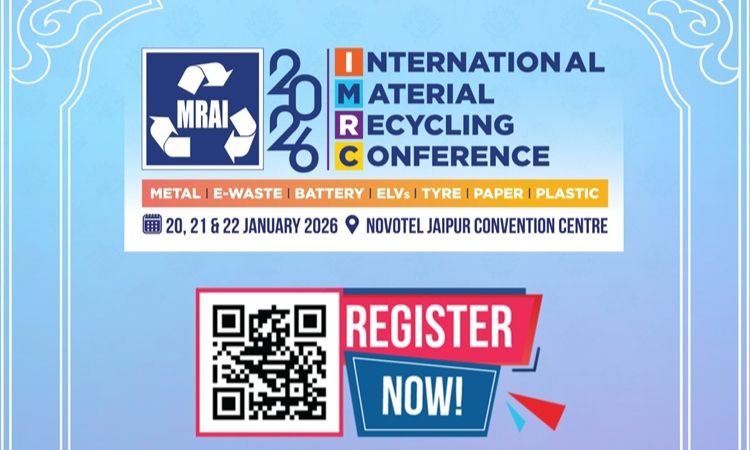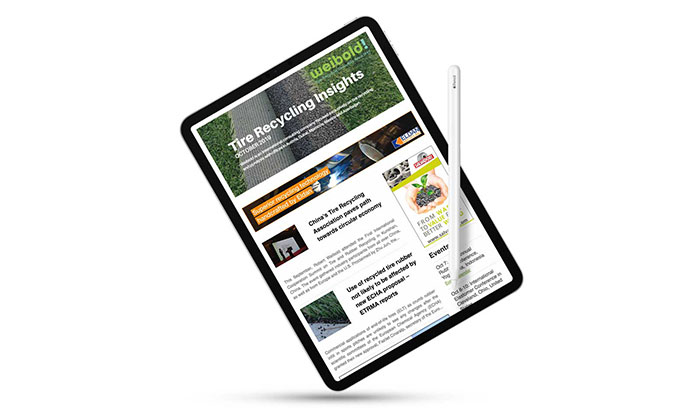Members of Canadian Association of Tire Recycling Agencies produced exhaustive LCA on end-of-life tires
According to a recent study, recycling used tires has less of an impact on the environment than using new materials to make the same items.
In order to fulfill producer obligations under the Tire Regulation 225/18 and the Resource Recovery and Circular Economy Act (RRCEA) of Ontario, producers must receive services that help them reach the regulatory goal of collecting and recycling 100 percent of the used tires they sell into the market. This involves delivering them to processing facilities and confirming how they are transformed into new products for authorized usage as Tire Derived Products on the market (TDP). A TDP replaces the more traditional method of producing goods by using fresh, or "raw," resources.
People anticipate that recycled tire products will be more environmentally friendly than the new materials they replace. The goal of the Scrap Tire Life Cycle Assessment (LCA), a study in which seven members of the Canadian Association of Tire Recycling Agencies voluntarily participated, was to quantify this expectation (CATRA). The study involved gathering and analyzing data from participating tire recycling companies utilizing information from 2017 to 2020.
The data from eTracks Tire Management Systems for its 2020 tire recycling efforts in Ontario, including: used tire collection, transporting, processing, and repurposing activities, is the focus of the following life cycle assessment summary.
LCA Overview
The LCA study examined six environmental effects: smog, air pollution, acidification, ozone depletion, global warming, and eutrophication of the air and water. Results compare a TDP's performance in each of these areas to the effects on the life cycle of each displaced substance. The results also compare the ecological implications of each TDP with one another. In Ontario, the avoided ecological impacts for each of these impacts were at least twice as large as those when new materials were utilized, with scores for acidification, human health particles, and climate change/global warming being very favorable.
The six impact categories that were included in the study were used to compare the emission impacts of tire recycling activities to the emissions that would have been produced if the same TDP had been produced using new or raw materials.
The radiative forcing potential of carbon dioxide emissions, a greenhouse gas, over a 100-year timeline is shown by the climate change/global warming (kg C02) unit. Using tire recycling techniques, for example: Impacts on CO2 emissions are 47,000,000 kg, against 197,000,000 kg without tire recycling activities. Overall reduction in emissions: 150,000,000 kg C02
Smog generation (kg 03): Denotes the potential for the production of ground level ozone from volatile compound emissions that result in "dirty air." For example, the difference between 4,500,000 kg of O3 and 13,400,000 kg of O3 using tire recycling activities. 8,900,000 kg O3 worth of emissions were completely averted.
Human health-particulates (PM2.5): This measurement of airborne particulate matter is corrected for severity by comparison to dust with a diameter of 2.5 microns. Although the eye cannot perceive these particles, breathing them in can. For example, the quantity of PM2.5 emissions prevented was 100,000 PM2.5 with tire recycling activities compared to 27,000 PM2.5 without tire recycling operations.
Acidification (kg S02): Indicates the amount of chemicals, either as droplets or particles, that are released into the atmosphere. For example, 210,000 kg S02 with tire recycling operations versus 850,000 kg S02 without tire recycling activities. 640,000 kg S02 in total emissions were averted.
The breakdown of ozone in the stratosphere by extremely persistent halogenated compounds is referred to as ozone depletion (kg CFC-11). Using tire recycling as an example: 53 kilogram CFC-11, as opposed to 103 kg CFC-11 without tire recycling activities. 50 CFC-11 in total have been avoided as emissions.
Eutrophication (kg N): Indicates environmental releases of nitrogen- and phosphorus-containing chemicals, which can cause aquatic ecosystems to become unstable. Using tire recycling as an example: 22,000 kg N, v. 45,000 kg N without tire recycling activities. A total of 23,000 kg N of emissions were saved.
Best emmissions-reducing products
Seventeen of the twenty-one tire-derived products (TDPs) produced a net decrease in greenhouse gas (GHG) emissions. Reusing used tires, retreading used tires, crumb rubber (containing fibre and acrylic sand), rubberized asphalt, moulded rubber, moulded concrete, and blast mats are among the products that were most successful in lowering emissions in Ontario.
"The reduction in emissions reported in this study is evidence that Ontarians benefit from Extended Producer Responsibility (EPR), which has a legal aim of 100% tire collection and recycling. The bigger challenge facing industry participants is to advance our technology and recycling infrastructure so that it is simple and feasible to reuse resources rather than acquiring new ones. Building stronger recycling infrastructure, separating valuable materials from waste streams, and reusing them for as long as feasible are all efforts Ontario is making to achieve sustainable goals "eTracks Tire Management Systems CEO Steve Meldrum says.
LCA background
For the task of assigning quantified ecological implications for the life cycle of each TDP and its corresponding displaced product, widely used industry data sources were used; these impacts are computed to the point at which the material is ready for transportation to its end-use. This is referred to as "authorized usage" and "recovery" in Ontario. It is the stage at which a used tire has been transformed into a new item, such as rubberized asphalt and concrete, playground flooring, cattle mats, and so on.
The circular economy is a framework for managing our resources so that we extend their useful lives, cut waste, and innovate to extend the life cycles of the things we use every day. All of us, including consumers, business executives, and the government, must actively collaborate to develop plans for enhancing the sustainability of our systems in order to achieve this. Beyond just resource use and efficiency, the circular economy and models like individual producer accountability and extended producer responsibility also take into account how resource use affects greenhouse gas emissions.
To read the full article, please proceed to Recycling Product News.
Weibold is an international consulting company specializing exclusively in end-of-life tire recycling and pyrolysis. Since 1999, we have helped companies grow and build profitable businesses.









